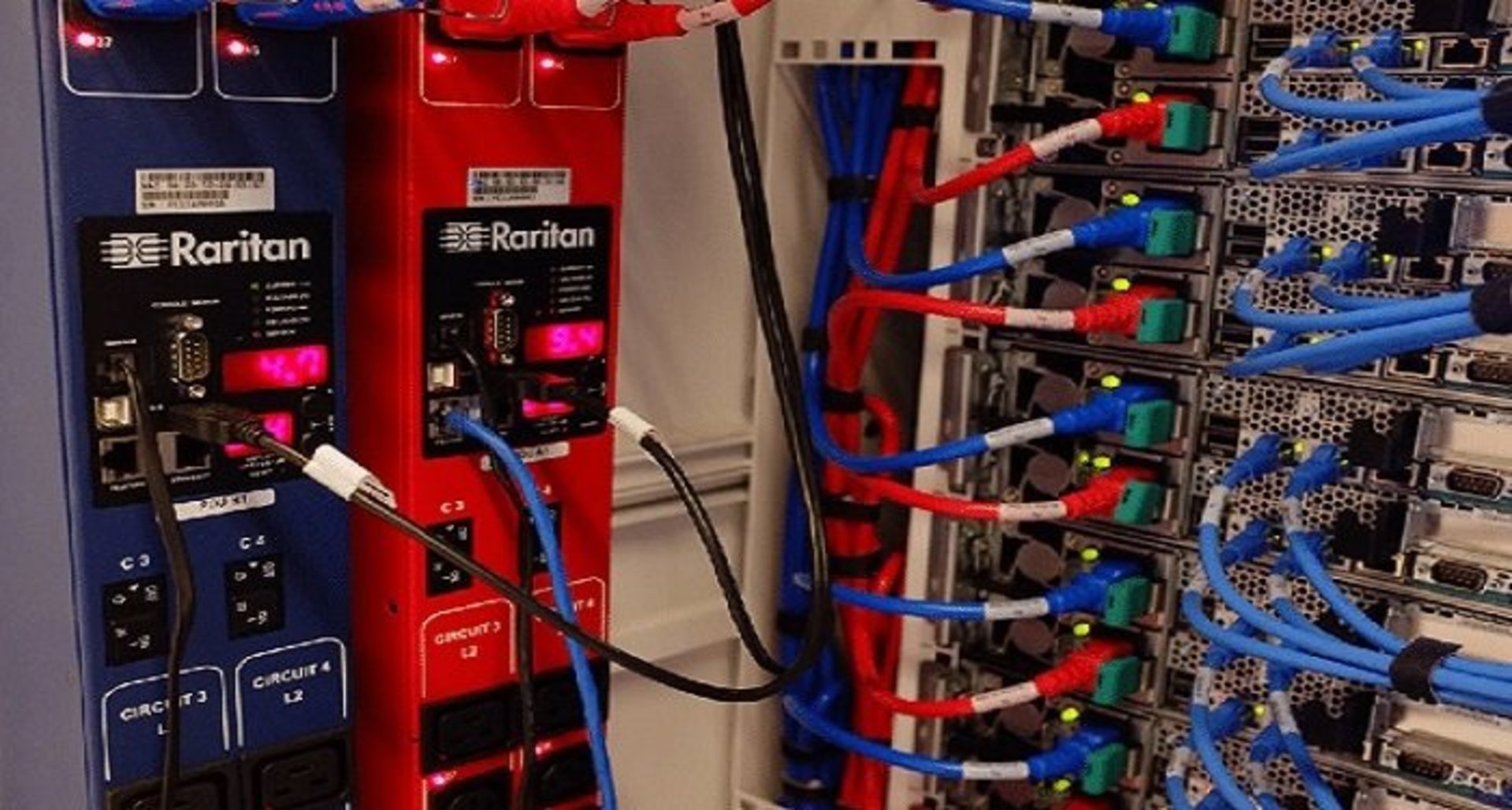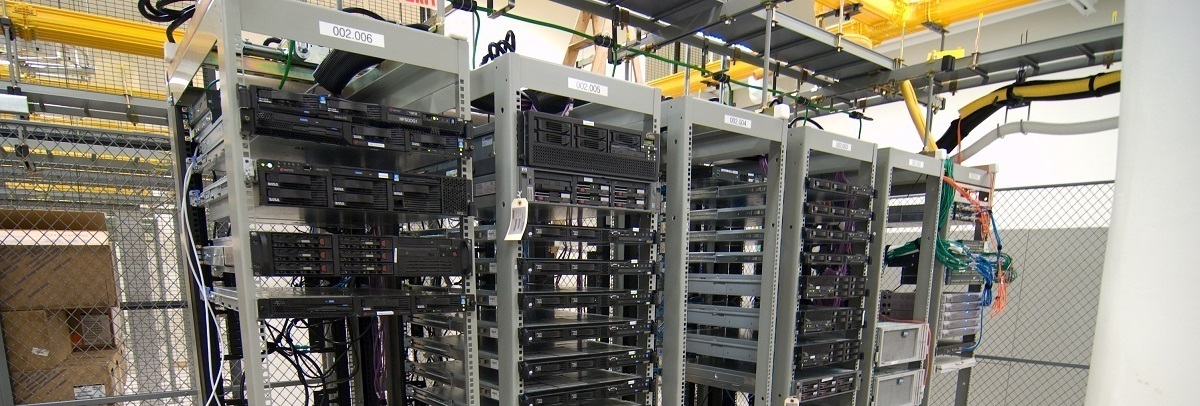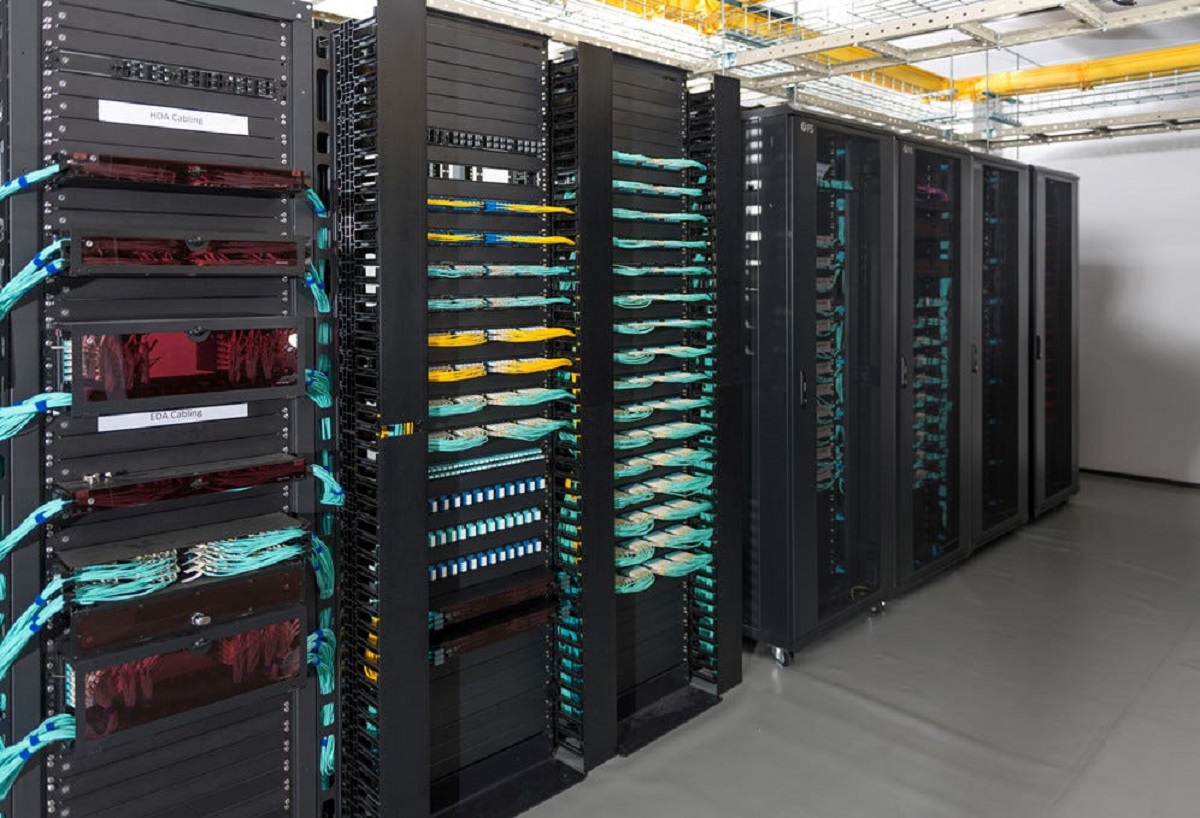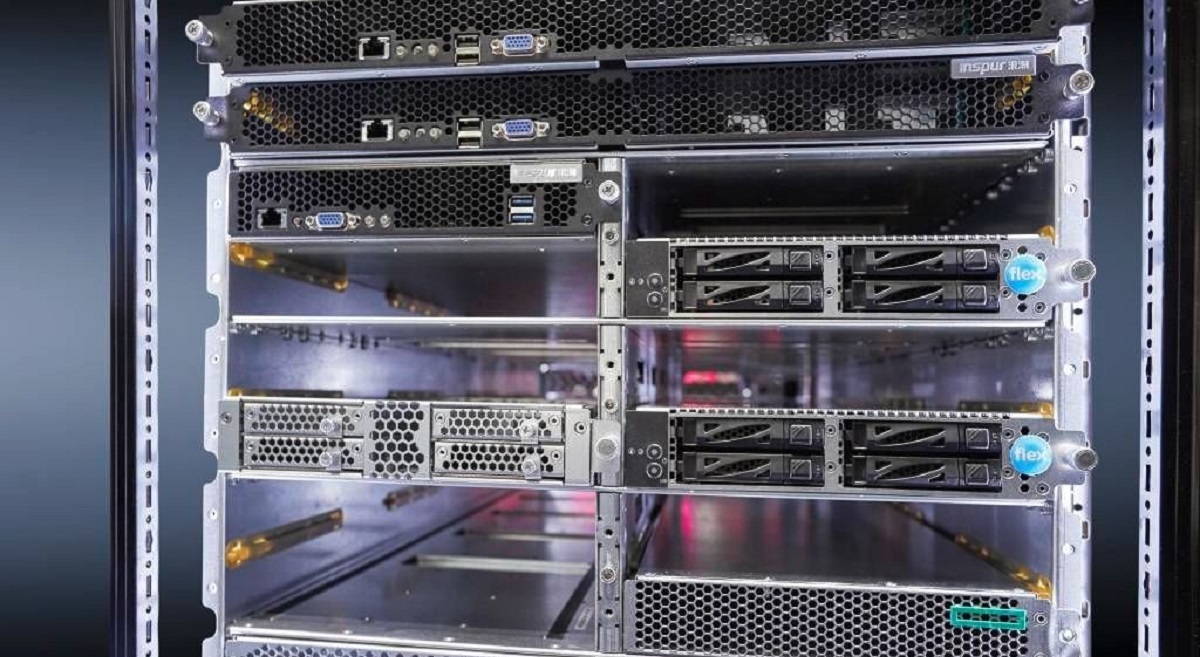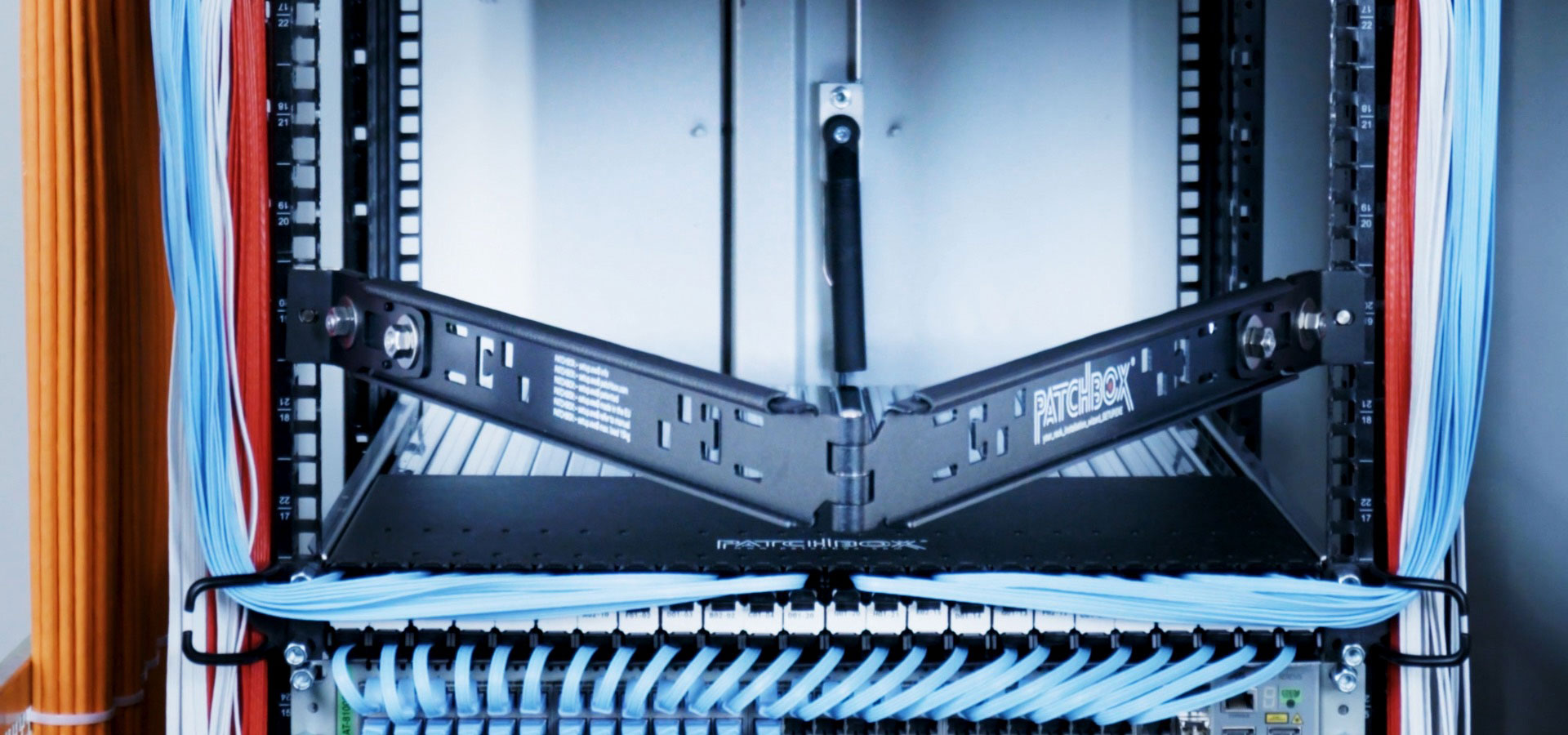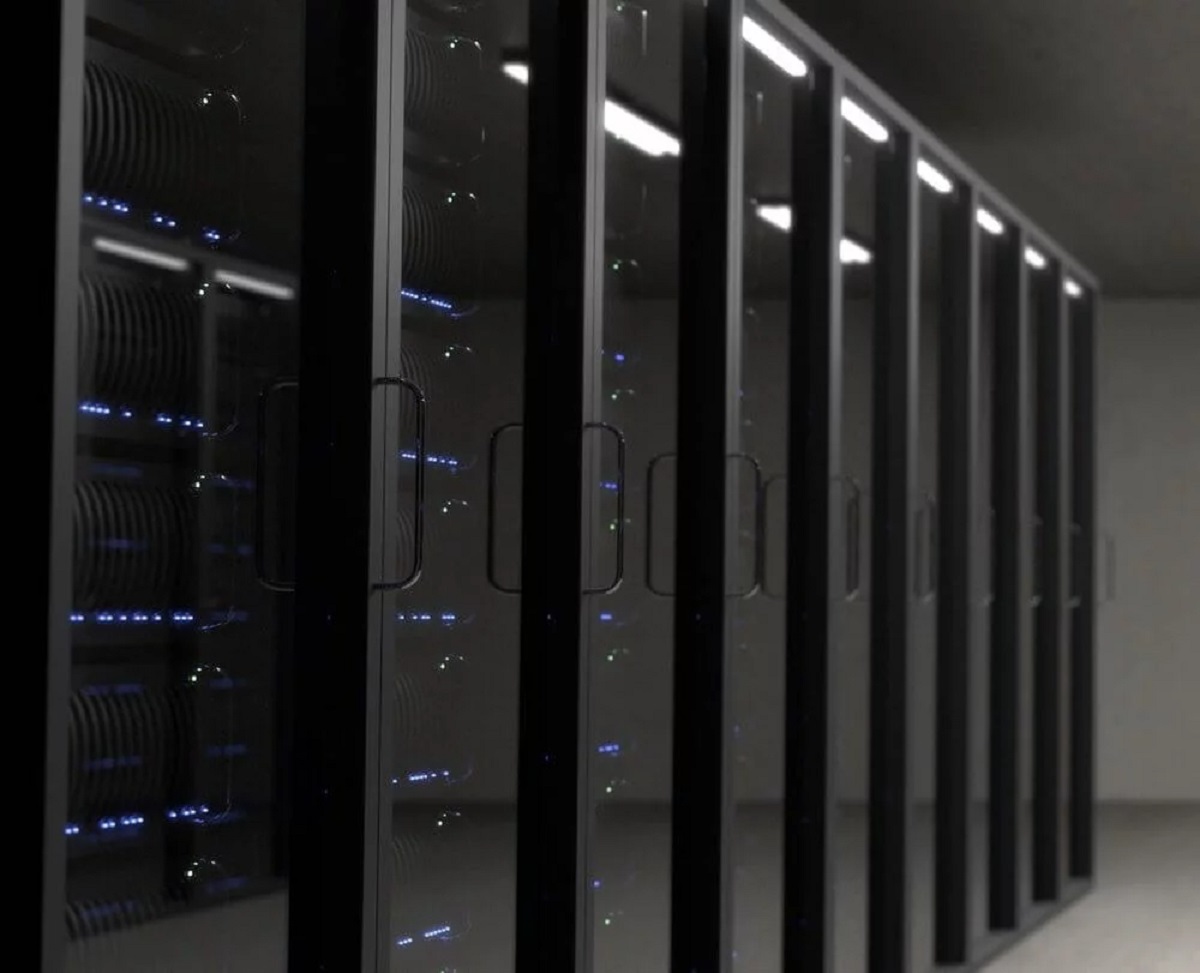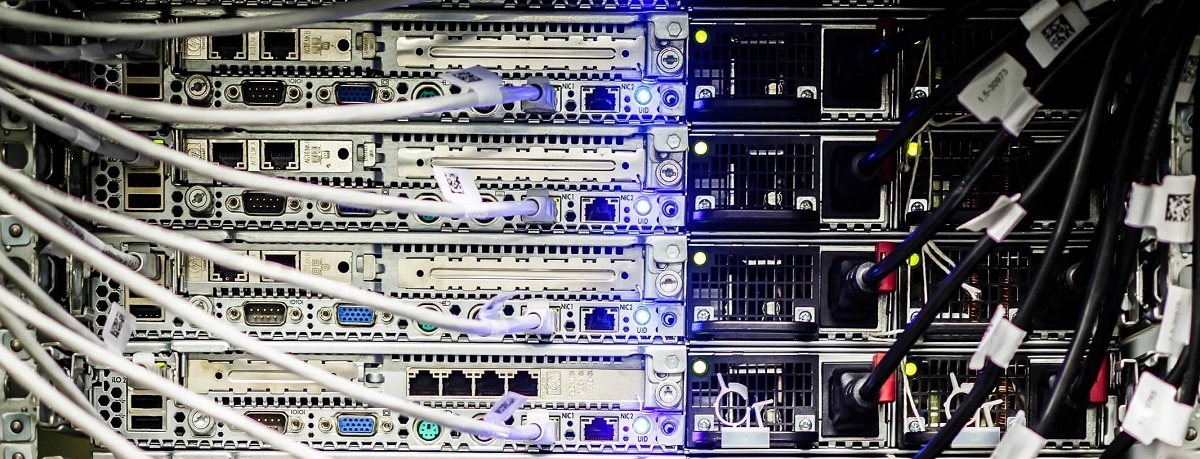Introduction
A power distribution unit (PDU) is a crucial component in server rack setups, providing electrical power distribution to all the devices and equipment housed within the rack. It serves as a centralized power source, ensuring that each component receives the necessary power supply for optimal performance. However, there is a limit to the number of PDUs that can be installed in a server rack, which is determined by various factors that need to be considered.
When planning the installation of PDUs in a server rack, it is essential to evaluate several key aspects to ensure efficient power management and avoid overloading the system. These factors include the power capacity of the rack, the power capacity of the PDUs, the power load of the equipment, the presence of redundant power supply, the number of plugs and outlets required, the wiring and cable management considerations, the cooling and airflow requirements, the available space within the server rack, and the total power draw of the setup.
In this article, we will delve into each of these factors in detail, providing valuable insights and guidelines to determine the maximum number of PDUs that can be installed in a server rack. By understanding these considerations, IT professionals can make informed decisions when it comes to optimizing power distribution in their server infrastructure, thereby ensuring the smooth operation of critical systems and minimizing the risk of power-related issues.
Factors to Consider
When deciding how many power distribution units (PDUs) can be installed in a server rack, several important factors must be considered. These factors will help determine the optimal number of PDUs required to meet the power demands of the equipment housed within the rack.
The first factor to consider is the power capacity of the server rack itself. Each server rack has a maximum power load it can support, typically measured in terms of wattage. It is important to know this capacity to ensure that the total power consumption of the PDUs and the equipment installed in the rack does not exceed the rack’s limits. Exceeding the rack’s power capacity can lead to overheating, power failures, and potential damage to the equipment.
Another crucial factor is the power capacity of the PDUs. PDUs come in different models and configurations, with varying power capacities. It is important to choose PDUs with a power capacity that matches the total power needs of the equipment in the rack. Additionally, considering the future growth of the infrastructure is essential to ensure that the chosen PDUs can accommodate any additional devices or equipment that may be added later.
The power load of the equipment is another significant consideration. Different devices and equipment have varying power requirements. It is important to assess the power demands of each component and calculate the total power consumption to determine how many PDUs are needed to adequately distribute power to all the equipment in the rack. This will help prevent overloading PDUs and ensure a stable power supply for all devices.
In situations where equipment has redundant power supplies, it is essential to account for the additional power requirements. Redundant power supplies ensure that if one supply fails, the other can continue to provide power. When calculating the number of PDUs needed, it is important to consider the power requirements of both redundant power supplies to ensure that each supply is adequately supported.
The number of plugs and outlets required is another factor to consider. PDUs come with different numbers of outlets, and it is critical to ensure that there are sufficient outlets to power all the equipment in the rack. Additionally, it is important to consider the type of plugs required for the equipment and ensure that the chosen PDUs offer compatible outlets.
Proper cable management is essential for efficient power distribution. Consider the wiring and cable management requirements when determining the number of PDUs to install. Proper cable management ensures optimal airflow, reduces the risk of cable damage or disconnection, and improves the overall organization of the rack.
Cooling and airflow considerations cannot be neglected. The number of PDUs installed should not obstruct the airflow in the server rack. It is important to leave enough space for proper cooling and ensure that the PDUs themselves do not generate excess heat. This will help prevent overheating and ensure the longevity of the equipment.
The availability of space in the server rack is another factor to consider. PDUs take up physical space, and it is essential to assess the available rack space to determine the number of PDUs that can be comfortably accommodated without overcrowding the rack.
Finally, the total power draw of the setup must be evaluated. By calculating the total power consumption of the equipment and the PDUs, IT professionals can determine if the power demands are within the capacity of the server rack and the PDUs. This information is crucial for maintaining a stable power supply and avoiding potential power-related issues.
Considering these factors will help determine the appropriate number of PDUs to install in a server rack, ensuring efficient power distribution, optimal performance, and minimizing the risk of power-related problems.
Power Capacity of the Server Rack
The power capacity of a server rack is a critical factor to consider when determining the number of power distribution units (PDUs) that can be installed. Each server rack has a specific power load it can handle, which is typically measured in terms of wattage.
It is essential to know the power capacity of the server rack to ensure that the total power consumption of the PDUs and the equipment installed in the rack does not exceed its limits. Exceeding the power capacity can lead to various issues such as overheating, power failures, and potential damage to the equipment.
To determine the power capacity of the server rack, it is important to refer to the manufacturer’s specifications or consult the rack’s documentation. The power capacity can vary based on the size and design of the rack. The documentation should provide information about the maximum power load that the rack can support.
Once you have determined the power capacity of the server rack, it is crucial to calculate the power requirements of all the devices and equipment that will be housed in the rack. This includes servers, switches, storage devices, and any other components. These devices usually come with power specifications provided in the form of wattage or current draw.
Add up the power requirements of all the equipment to determine the total power consumption of the rack. It is important to leave some headroom to account for any potential power spikes or future expansion. It is generally recommended to operate the server rack at around 80% of its maximum capacity to ensure a safe margin.
By comparing the total power consumption of the equipment with the power capacity of the server rack, you can determine how many PDUs can be installed. For example, if the equipment requires a total power consumption of 5,000 watts and the server rack has a power capacity of 7,500 watts, it allows for the installation of at least one PDU.
However, keep in mind that other factors such as redundant power supply, number of plugs and outlets, wiring and cable management, cooling, and airflow requirements also need to be considered when determining the number of PDUs to install. These factors, along with the power capacity of the server rack, work together to ensure efficient power distribution and smooth operation of the equipment.
Understanding the power capacity of the server rack is crucial for maintaining the stability and reliability of the entire infrastructure. By carefully evaluating the power requirements of the equipment and ensuring they align with the rack’s power capacity, IT professionals can make informed decisions regarding the installation of PDUs to meet the power demands of their server rack setup.
Power Capacity of the PDUs
The power capacity of the power distribution units (PDUs) is a crucial consideration when determining how many PDUs can be installed in a server rack. The power capacity of PDUs determines how much power they can deliver to the connected devices within the rack.
PDUs come in different models and configurations, each with its own power capacity. The power capacity of a PDU is usually specified in terms of amperage or wattage. It is important to choose PDUs that have a power capacity suitable for the power demands of the equipment within the server rack.
When determining the power capacity of the PDUs, consider the power requirements of the devices and equipment that will be connected to them. Each device typically has its own power specifications, which are provided by the manufacturer. The power requirements are usually specified in terms of wattage or current draw.
Sum up the power requirements of all the devices to determine the total power consumption within the rack. Ensure that the power capacity of the chosen PDUs is sufficient to meet this total power consumption. It is also recommended to have some headroom to accommodate any power spikes or future expansion.
If the power consumption of the equipment within the rack exceeds the power capacity of a single PDU, multiple PDUs can be installed. In such cases, it is important to distribute the power load evenly across the PDUs to ensure balanced power distribution and prevent overloading.
Another factor to consider is the type of PDUs available. PDUs can be classified into different types, such as basic PDUs, metered PDUs, switched PDUs, and intelligent PDUs. Each type has specific features and capabilities. It is important to choose PDUs that not only meet the power requirements but also offer the required functionality.
Moreover, future expansion should also be taken into account. If there are plans to add more devices or equipment to the server rack in the future, it is advisable to choose PDUs with a higher power capacity to accommodate the additional power load.
Overall, the power capacity of the PDUs should align with the power demands of the equipment within the server rack. By selecting PDUs with appropriate power capacity, IT professionals can ensure efficient power distribution, minimize the risk of overloading, and maintain a stable power supply for all the devices and equipment in the rack.
Power Load of the Equipment
The power load of the equipment housed in a server rack is a crucial factor to consider when determining the number of power distribution units (PDUs) that can be installed. Each device and component within the rack has its own power requirements, and it is important to assess the power load to ensure that the PDUs can adequately supply power to all the equipment.
When calculating the power load of the equipment, start by gathering the power specifications provided by the manufacturers. These specifications typically include information on the wattage or current draw of each device. Be sure to account for both active devices, such as servers, switches, and storage units, as well as any passive devices that may require power, such as fans or lighting.
Add up the power requirements of all the equipment to determine the total power load. It is important to consider the maximum power consumption of each device to ensure that the PDUs can handle the peak load without reaching their capacity limits.
Keep in mind that the power load may vary depending on the operational state of the equipment. For example, servers may have higher power consumption during peak usage or when running resource-intensive tasks. It is crucial to account for these variations and ensure that the PDUs can handle the maximum power load that may occur.
If the power load of the equipment exceeds the capacity of a single PDU, multiple PDUs may be required. In such cases, it is important to distribute the power load evenly across the PDUs to prevent overloading. Consider the power capacity of each PDU and distribute the equipment in a way that ensures a balanced power distribution and maintains a stable power supply.
Additionally, it is important to plan for future growth and scalability. If there are plans to add more equipment to the server rack in the future, make sure to account for their power requirements when determining the number and capacity of the PDUs. This ensures that the power load can be adequately sustained as the infrastructure expands.
Regular monitoring and evaluation of the power load is essential to ensure that the PDUs and the power distribution within the rack remain within safe limits. Consider implementing power monitoring tools or utilizing the management capabilities of intelligent PDUs to keep track of power consumption and make adjustments as necessary.
Understanding the power load of the equipment is vital for determining the number of PDUs needed and ensuring efficient power distribution. By accurately assessing the power requirements of the equipment and choosing PDUs that can handle the power load, IT professionals can maintain a reliable and stable power supply for the entire server rack infrastructure.
Redundant Power Supply
Redundant power supply is an important consideration when determining the number of power distribution units (PDUs) that can be installed in a server rack. Redundancy provides an added layer of protection against power failures by ensuring that if one power supply fails, another can seamlessly take over the power delivery.
When assessing the number of PDUs required in a server rack with redundant power supply, it is important to consider the power requirements of both power supplies. Each power supply should be capable of supporting the full power load of the equipment in case of a power supply failure.
For example, if the power load of the equipment is 10,000 watts and each power supply can handle up to 6,000 watts, it would be advisable to install at least two PDUs to ensure that each power supply is adequately supported. This way, if one power supply fails, the remaining power supply can still provide sufficient power through the support of the installed PDUs.
Keep in mind that the power load may not always be evenly distributed between the power supplies. In some cases, one power supply may be handling a higher load than the other due to system configurations or workload distribution. It is crucial to consider this imbalance when determining the number and capacity of the PDUs for redundant power supply setups.
Furthermore, when installing PDUs for redundant power supply, it is important to ensure that the PDUs are connected to separate power sources or separate power feeds to minimize the risk of a single point of failure. This adds an extra layer of reliability to the power distribution system and helps prevent any power-related disruption or downtime.
Proper monitoring and maintenance of the redundant power supply setup is essential to ensure its effectiveness. Regularly check and test the power supplies and PDUs to ensure they are functioning correctly and capable of handling their respective power loads. Consider utilizing power management tools or intelligent PDUs to monitor and manage power usage and ensure that the redundancy is maintained.
Having a redundant power supply setup not only enhances the reliability and uptime of the server rack infrastructure but also provides peace of mind in case of power supply failures. By accurately assessing the power requirements of the redundant power supplies and installing the appropriate number of PDUs, IT professionals can ensure a reliable power supply and mitigate the risk of power-related disruptions.
Number of Plugs and Outlets
The number of plugs and outlets required is a critical factor to consider when determining how many power distribution units (PDUs) can be installed in a server rack. The availability of sufficient plugs and outlets is crucial to ensure that all the equipment within the rack can be powered adequately.
Start by assessing the power requirements of each device within the server rack. Consider the number of devices that need to be powered and the power consumption of each device. This will help determine the number of outlets needed to accommodate all the equipment.
When selecting PDUs, consider the number of outlets they provide and ensure that it aligns with the total number of outlets required. Some PDUs offer a higher density of outlets, allowing for more devices to be connected in a limited space. Choose PDUs that offer the appropriate number of outlets to meet your needs.
Additionally, consider the type of plugs required for the equipment. Different devices may have different plug types, such as NEMA, IEC, or other regional standards. Ensure that the outlets on the PDUs are compatible with the plugs on the equipment to ensure a proper and secure connection.
It is also important to consider the future growth and scalability of the rack. If there are plans to add more devices in the future, make sure to account for the additional plugs and outlets. This will prevent any limitations or constraints when expanding the infrastructure.
Another consideration is the layout and organization of the rack. Proper cable management is essential for efficient power distribution and minimizing the risk of cable tangling or disconnection. Ensure that there is sufficient space and proper organization within the rack to accommodate the plugs and manage the cables effectively.
Moreover, it is important to consider the power redundancy setup. In a redundant power supply configuration, where multiple power sources are connected to the PDUs, ensure that each power source has the necessary number of plugs and outlets to support the equipment it is responsible for powering.
By carefully assessing the number of plugs and outlets required and choosing PDUs with the appropriate number and type of outlets, IT professionals can ensure efficient power distribution and avoid any limitations or issues with powering the equipment within the server rack.
Wiring and Cable Management
Proper wiring and cable management are crucial factors to consider when determining the number of power distribution units (PDUs) that can be installed in a server rack. Organized and efficient cable management not only improves the overall aesthetics of the rack but also plays a significant role in ensuring the effectiveness of power distribution and maintaining optimal airflow.
Start by planning the routing and placement of power cables within the rack. Proper cable routing helps eliminate cable clutter and potential obstructions, making it easier to access and manage the equipment. Consider using cable management accessories such as cable trays, cable management arms, or cable ties to keep the cables organized and secured.
When determining the number of PDUs, ensure that there are sufficient power outlets and cable management options to accommodate all the power cables. Each PDU should be equipped with the required number of outlets to connect the equipment in an organized and efficient manner.
Consider the length of the power cables as well. Ensure that the cables are long enough to reach the devices without unnecessary strain or tension. However, avoid using excessively long cables as they can clutter the rack and hinder proper cable management.
Color-coding the power cables can also be beneficial. Assigning different colors to power cables based on the devices they connect to or the power sources they are associated with can help simplify troubleshooting and maintenance.
Labeling the cables is another effective method to facilitate cable management. Use labels or tags to identify the purpose of each cable, such as the device it powers or the power source it is connected to. This helps with quick identification and reduces the chances of mistakenly disconnecting the wrong cable during maintenance or troubleshooting.
Consider the use of power distribution units with built-in cable management features. Some PDUs offer cable management options integrated into their design, such as cable trays or cable clips. These features can greatly assist in keeping the power cables organized and neatly arranged.
Regularly review and assess the cable management setup to ensure that it remains effective. As new devices are added or removed from the rack, make necessary adjustments to maintain an organized and clutter-free environment. Perform routine checks to identify any loose or damaged cables and replace or secure them as needed.
Efficient cable management not only contributes to smooth and reliable power distribution but also simplifies troubleshooting and maintenance tasks. By investing time and effort into proper wiring and cable management, IT professionals can optimize the performance and lifespan of the equipment within the server rack.
Cooling and Airflow
Cooling and airflow are critical considerations when determining the number of power distribution units (PDUs) that can be installed in a server rack. Proper cooling and airflow management are essential for maintaining optimal operating temperatures and preventing overheating of the equipment.
When planning the installation of PDUs, it is important to consider their size and design to ensure that they do not obstruct the airflow within the rack. The PDUs should be installed in a way that allows for sufficient airflow around them and through the rack.
Pay attention to the placement of the PDUs in relation to other heat-generating components such as servers and switches. Ensure that the PDUs do not impede the airflow from the cooling system or block the hot air exhaust from escaping the server rack. This helps maintain a consistent and efficient cooling mechanism throughout the rack.
It is also crucial to consider the ventilation and cooling capabilities of the server rack itself. Evaluate the available ventilation options, such as perforated front and rear doors, as well as any built-in cooling mechanisms such as fans or air conditioning units. Adequate airflow is essential to dissipate heat generated by the equipment and maintain optimal operating temperatures.
Consider the overall rack layout and arrangement of equipment to optimize airflow. Make sure that the PDUs are not placed in a way that creates hotspots within the rack. Strategically position the equipment and PDUs to promote a uniform and efficient flow of cool air to the intake areas of the devices.
Regularly monitor and measure the temperature within the rack to ensure that it remains within acceptable ranges. Temperature monitoring tools can help identify any areas of potential overheating or inadequate airflow, allowing timely adjustments to be made. Also, consider implementing temperature management features available in intelligent PDUs that can track temperature levels and trigger alerts if thresholds are exceeded.
Proper cable management also contributes to maintaining good airflow within the rack. Organize and bundle the power cables neatly, avoiding any tangles or loose cables that may obstruct the airflow. Use cable management accessories such as cable trays or clips to secure the cables out of the way.
Regular maintenance of cooling components, such as fans or air conditioning units, is essential to ensure their effectiveness. Clean or replace air filters regularly to prevent dust buildup and ensure proper airflow. Additionally, ensure that the PDUs themselves do not generate excessive heat that may affect the overall cooling efficiency.
By considering cooling and airflow in the planning and installation of PDUs, IT professionals can help create an environment that promotes efficient heat dissipation, prevents overheating, and ensures the reliable operation of the equipment within the server rack.
Server Rack Space Availability
Server rack space availability is a significant factor to consider when determining the number of power distribution units (PDUs) that can be installed in a rack. The physical space within the rack must be carefully evaluated to ensure that there is enough room to accommodate the PDUs along with the other equipment.
Begin by assessing the available space within the server rack. Consider the dimensions and layout of the rack, including the height, width, and depth. Measure the available space to determine how much room is available for installing PDUs.
Take into account any existing equipment within the rack. Calculate the space required for the servers, switches, storage devices, and any other components that are already installed. This will help determine how much physical space remains for the installation of PDUs.
Consider the quantity and size of the PDUs that need to be installed. PDUs come in various sizes, such as 1U, 2U, or larger. The size of the PDUs will impact the amount of vertical space they require within the rack. Evaluate how many PDUs can fit within the remaining available space without overcrowding the rack.
Take into consideration the placement and arrangement of the PDUs within the rack. Plan the positioning of the PDUs to maximize space utilization and ensure optimal cable management. Determine the best location for the PDUs that will facilitate easy access and minimize interference with other equipment.
It is also important to consider any additional space requirements for future expansion. If there are plans to add more equipment to the rack in the future, ensure that there is sufficient space to accommodate the additional PDUs that may be required to support the new devices.
During the installation process, allow for proper spacing between the PDUs, equipment, and other components within the rack. Sufficient spacing allows for proper airflow and efficient cable management. Avoid overcrowding the rack, as it can lead to inadequate cooling, cable management difficulties, and hinder accessibility for maintenance tasks.
Regularly assess the space utilization within the rack to ensure that it remains optimized. As new equipment is added or removed, make necessary adjustments to maximize available space and prevent any physical constraints.
By carefully evaluating the available server rack space and considering the size, quantity, and placement of the PDUs, IT professionals can ensure efficient utilization of the rack while maintaining proper airflow, cable management, and ease of maintenance.
Total Power Draw
The total power draw of a server rack is a crucial factor to consider when determining the number of power distribution units (PDUs) that can be installed. Calculating the total power draw helps ensure that the power distribution within the rack remains within safe limits and that the PDUs can handle the load effectively.
To determine the total power draw, start by calculating the power requirements of each device within the rack. Refer to the specifications provided by the manufacturers, which typically include information on the power consumption of each device in terms of wattage or current draw.
Add up the power requirements of all the devices to get the total power draw. This represents the amount of power that the PDUs should be able to supply to the equipment within the rack. It is important to account for any future expansion or addition of devices to ensure that the PDUs can handle the increased power load.
Consider any redundant power supplies within the rack. If the devices have redundant power supplies, both supplies should be factored into the total power draw calculation. Each power supply should be capable of supporting the full power load in case of a failure of the other supply.
It is essential to leave some headroom when calculating the total power draw to account for any power spikes or fluctuations that may occur. Operating the rack at around 80% of its maximum power capacity is generally recommended to ensure stability and avoid overloading the PDUs.
Regular monitoring of the power draw is recommended to ensure that the actual power consumption remains within the calculated limits. Use power monitoring tools or intelligent PDUs that provide real-time power usage data to keep track of the power consumption.
Consider the power efficiency and energy-saving features of the devices and PDUs. Opting for energy-efficient equipment and PDUs can help reduce power consumption, lower operating costs, and minimize environmental impact.
As the power draw may change over time due to hardware upgrades or changes in workload, it is important to reassess the total power draw periodically. Regularly review and update the calculations to ensure that the PDUs remain capable of providing sufficient power for the equipment in the server rack.
Understanding the total power draw of a server rack is crucial for maintaining a stable and reliable power supply. By accurately calculating the power requirements of the devices, accounting for any redundant power supplies, and regularly monitoring the power consumption, IT professionals can ensure that the PDUs are capable of providing the necessary power to support the infrastructure’s needs.
Conclusion
When determining how many power distribution units (PDUs) can be installed in a server rack, several factors must be carefully considered. These factors include the power capacity of the server rack, the power capacity of the PDUs, the power load of the equipment, redundant power supply, the number of plugs and outlets, wiring and cable management, cooling and airflow requirements, server rack space availability, and the total power draw.
Understanding the power capacity of the server rack is crucial for ensuring that the power consumption of the PDUs and the equipment does not exceed its limits. Evaluating the power capacity helps determine the maximum number of PDUs that can be installed while maintaining the rack’s stability and optimal performance.
The power capacity of the PDUs should align with the power load of the equipment within the rack. PDUs with the appropriate power capacity ensure efficient power distribution and prevent overloading, allowing all devices to be adequately powered.
Redundant power supplies offer an added layer of protection against power failures. It is important to consider the power requirements of both power supplies and distribute the power load evenly across PDUs to ensure balanced power distribution in case of a failure.
The number of plugs and outlets required should accommodate all the equipment within the rack. Choosing PDUs with the appropriate number and type of outlets ensures a proper and secure connection for each device.
Proper wiring and cable management facilitate efficient power distribution and airflow within the rack. Organizing and securing power cables minimize the risk of tangling or disconnection and optimize cooling and airflow management.
Cooling and airflow play a crucial role in maintaining optimal operating temperatures. PDUs should be installed to allow for proper ventilation and airflow, ensuring the overall cooling effectiveness and preventing equipment overheating.
The available space within the server rack should be evaluated to determine the number of PDUs that can be installed without overcrowding. Sufficient space allows for proper organization, cable management, and easy access to equipment.
Lastly, calculating the total power draw helps ensure that the power supply within the rack remains within safe limits. Regular monitoring and evaluation of the power consumption are necessary to make necessary adjustments and maintain a stable power supply.
By considering these factors and making informed decisions, IT professionals can determine the optimal number and placement of PDUs in a server rack. This ensures efficient power distribution, minimizes the risk of power-related issues, and helps maintain the reliability and performance of critical systems within the infrastructure.







